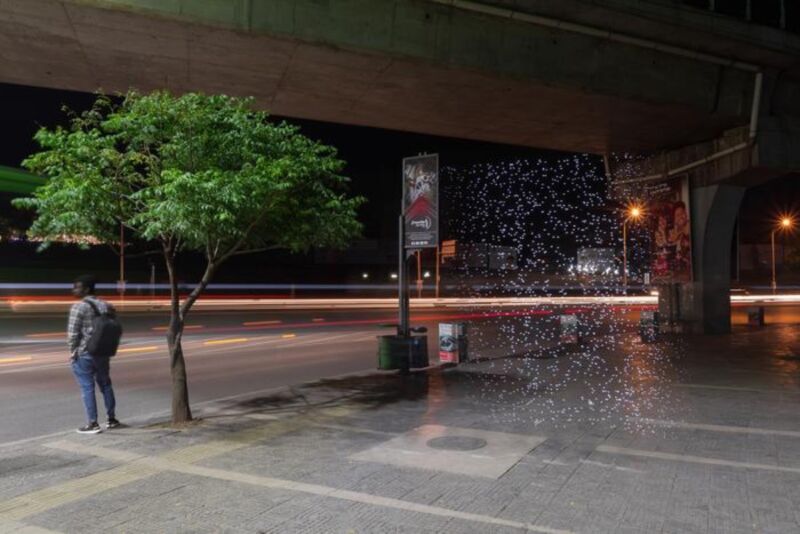
Robin Price
Light painting is a technique used in both art and science that involves taking long-exposure photographs while moving some kind of light source—a small flashlight, perhaps, or candles or glowsticks—to essentially trace an image with light. A UK collaboration of scientists and artists has combined light painting with low-cost air pollution sensors to visualize concentrations of particulate matter (PM) in select locations in India, Ethiopia, and Wales. The objective is to creatively highlight the health risks posed by air pollution, according to a new paper published in the journal Nature Communications.
“Air pollution is the leading global environmental risk factor,” said co-author Francis Pope, an environmental scientist at the University of Birmingham in the UK who spearheaded the Air of the Anthropocene project with artist Robin Price. “[The project] creates spaces and places for discussions about air pollution, using art as a proxy to communicate and create dialogues about the issues associated with air pollution. By painting with light to create impactful images, we provide people with an easy-to-understand way of comparing air pollution in different contexts—making something that was largely invisible visible.”
Light painting has been around since 1889, when Étienne-Jules Marey and Georges Demeny, who were investigating the use of photography as a scientific tool to study biological motion, created the first known light painting called Pathological Walk From in Front. In 1914, Frank and Lillian Mollier Gilbreth tracked the motion of manufacturing and clerical workers using light painting techniques, and in 1935, Man Ray “signed” his Space Writing series with a penlight—a private joke that wasn’t discovered until 74 years later by photographer/historian Ellen Carey in 2009.
American photographer Barbara Morgan started making light paintings in the 1930s, capturing famous dancers like Martha Graham in motion. And Pablo Picasso was photographed for Life magazine in 1949 making impromptu sketches with a small flashlight, the most famous of which is entitled Picasso Draws a Centaur.
It’s still a popular technique, driven by the 21st-century availability of dSLR cameras, portable light sources like LEDs, and smartphone cameras that enable real-time feedback to adjust light or exposure. For instance, in 2007 and 2008, LA-based artist Lia Halloran created a series of light paintings of skateboarders at night, dubbed “Dark Skate.” And Finnish artist Janne Parviainen created a striking series of light paintings in 2011, “Light Skeletons,” in the snow, using fire as his source of light.
Pope et al.’s latest paper builds on the work of Steve Mann, who used digital light painting as a means of visualizing sensor data, and of Timo Arnall, who used it to visualize the strength of WiFi signals. The team thought it would be an ideal approach for the Art of the Anthropocene project. The World Health Organization has estimated that 99 percent of the Earth’s population breathes at least some polluted air, causing some 7 million premature deaths every year. The problem is particularly severe in India and China, and African countries have seen sharp deterioration of air quality over the last 50 years as well.
-
IIT Nursery Playground, Delhi, India: PM 2.5 500–600 micrograms per cubic meter
Robin Price -
Indoor Biomass Burning Kitchen, Addis Ababa, Ethiopia: PM 2.5 150–200 micrograms per cubic meter.
Robin Price -
Playground at the Institute of Himalayan Biotechnology, Palumper, India: PM 2.5 30–40 micrograms per cubic meter.
Robin Price -
Prince Street air quality monitoring site, Port Talbot, Wales: PM 2.5 30–40 micrograms per cubic meter.
Robin Price




















+ There are no comments
Add yours